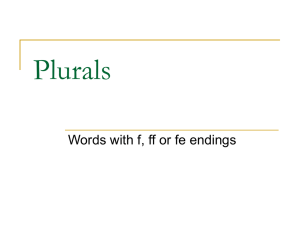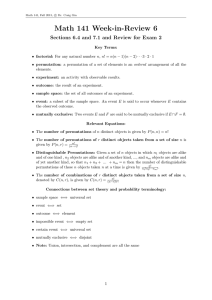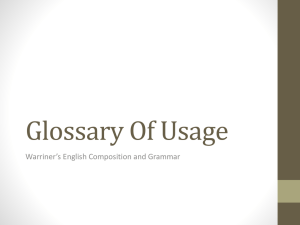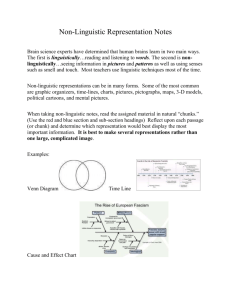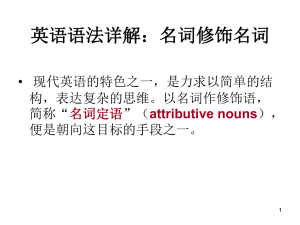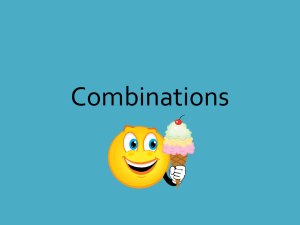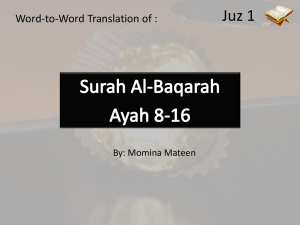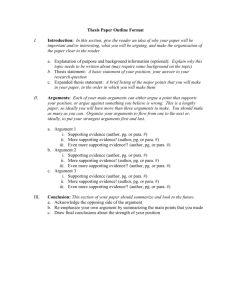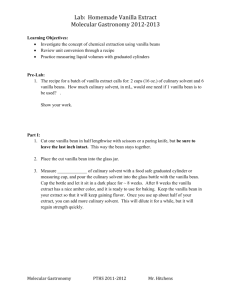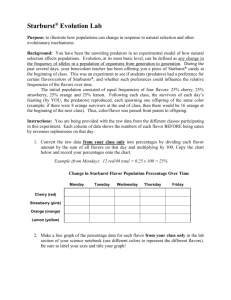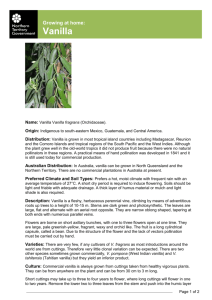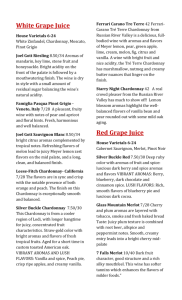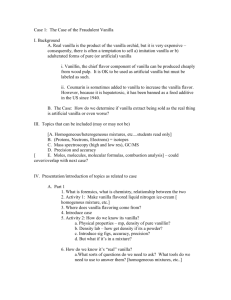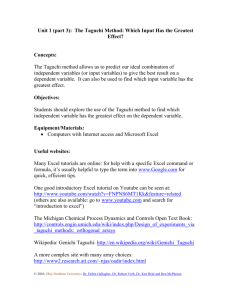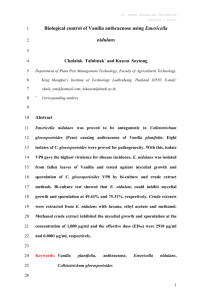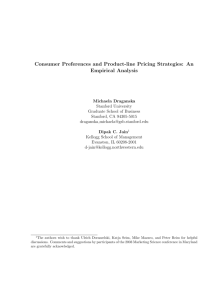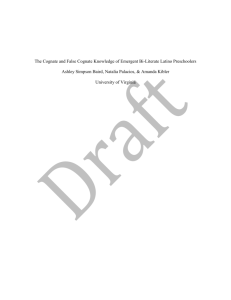Vocabulary Acquisition Lesson Plan
advertisement
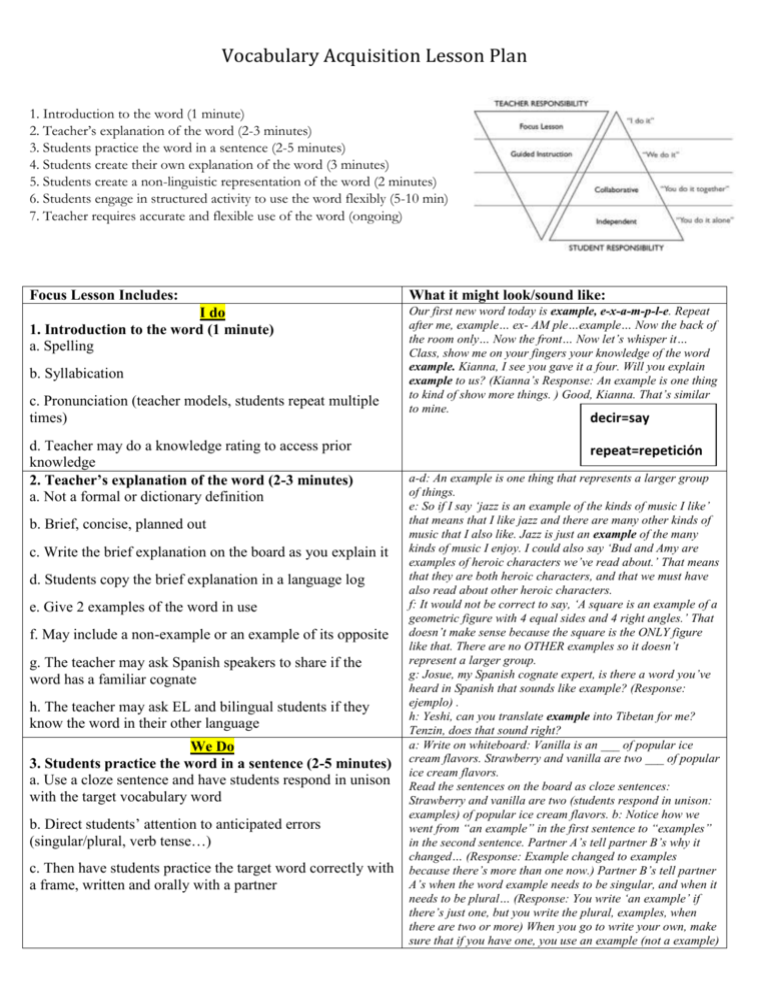
Vocabulary Acquisition Lesson Plan 1. Introduction to the word (1 minute) 2. Teacher’s explanation of the word (2-3 minutes) 3. Students practice the word in a sentence (2-5 minutes) 4. Students create their own explanation of the word (3 minutes) 5. Students create a non-linguistic representation of the word (2 minutes) 6. Students engage in structured activity to use the word flexibly (5-10 min) 7. Teacher requires accurate and flexible use of the word (ongoing) Focus Lesson Includes: What it might look/sound like: I do 1. Introduction to the word (1 minute) a. Spelling Our first new word today is example, e-x-a-m-p-l-e. Repeat after me, example… ex- AM ple…example… Now the back of the room only… Now the front… Now let’s whisper it… Class, show me on your fingers your knowledge of the word example. Kianna, I see you gave it a four. Will you explain example to us? (Kianna’s Response: An example is one thing to kind of show more things. ) Good, Kianna. That’s similar to mine. b. Syllabication c. Pronunciation (teacher models, students repeat multiple times) d. Teacher may do a knowledge rating to access prior knowledge 2. Teacher’s explanation of the word (2-3 minutes) a. Not a formal or dictionary definition b. Brief, concise, planned out c. Write the brief explanation on the board as you explain it d. Students copy the brief explanation in a language log e. Give 2 examples of the word in use f. May include a non-example or an example of its opposite g. The teacher may ask Spanish speakers to share if the word has a familiar cognate h. The teacher may ask EL and bilingual students if they know the word in their other language We Do 3. Students practice the word in a sentence (2-5 minutes) a. Use a cloze sentence and have students respond in unison with the target vocabulary word b. Direct students’ attention to anticipated errors (singular/plural, verb tense…) c. Then have students practice the target word correctly with a frame, written and orally with a partner decir=say repeat=repetición a-d: An example is one thing that represents a larger group of things. e: So if I say ‘jazz is an example of the kinds of music I like’ that means that I like jazz and there are many other kinds of music that I also like. Jazz is just an example of the many kinds of music I enjoy. I could also say ‘Bud and Amy are examples of heroic characters we’ve read about.’ That means that they are both heroic characters, and that we must have also read about other heroic characters. f: It would not be correct to say, ‘A square is an example of a geometric figure with 4 equal sides and 4 right angles.’ That doesn’t make sense because the square is the ONLY figure like that. There are no OTHER examples so it doesn’t represent a larger group. g: Josue, my Spanish cognate expert, is there a word you’ve heard in Spanish that sounds like example? (Response: ejemplo) . h: Yeshi, can you translate example into Tibetan for me? Tenzin, does that sound right? a: Write on whiteboard: Vanilla is an ___ of popular ice cream flavors. Strawberry and vanilla are two ___ of popular ice cream flavors. Read the sentences on the board as cloze sentences: Strawberry and vanilla are two (students respond in unison: examples) of popular ice cream flavors. b: Notice how we went from “an example” in the first sentence to “examples” in the second sentence. Partner A’s tell partner B’s why it changed… (Response: Example changed to examples because there’s more than one now.) Partner B’s tell partner A’s when the word example needs to be singular, and when it needs to be plural… (Response: You write ‘an example’ if there’s just one, but you write the plural, examples, when there are two or more) When you go to write your own, make sure that if you have one, you use an example (not a example) and if there are more than one example, you use the plural, examples. c: Now use these frames on the board to write/say your own sentences. ___ is an example of ___. ___ and ___ are two examples of ___. You Do Together 4. Students create their own explanation of the word (3 min) a. Students share with a partner, revise as needed, and copy into a language log As students finish, the teacher picks a student with a strong response to share theirs with the class. 5. Students create non-linguistic representation of the word (2 min) a. Teacher may model how this is done, but it is critical that students come up with their own representation that is meaningful to them (a sketch, picture, or gesture) Teacher may model. 6. Students engage in structured activities to learn to use the word flexibly (5-10 minutes on first day, then ongoing) a. Teacher requires students to use the new vocabulary in context As the students engage in learning activities the teacher listens not only for what they are saying, but how they are saying it. Teacher monitors for accurate use of target vocabulary and provides feedback. You Do 7. Independent Practice a. In activities such as written assignments, collaborative projects, class discussions, homework, and exit tickets b. In assessment such as quizzes, tests, and writing rubrics c. Ongoing focus in all subjects throughout the rest of the year Teacher requires accurate and flexible use of the word in speaking and writing (ongoing)
